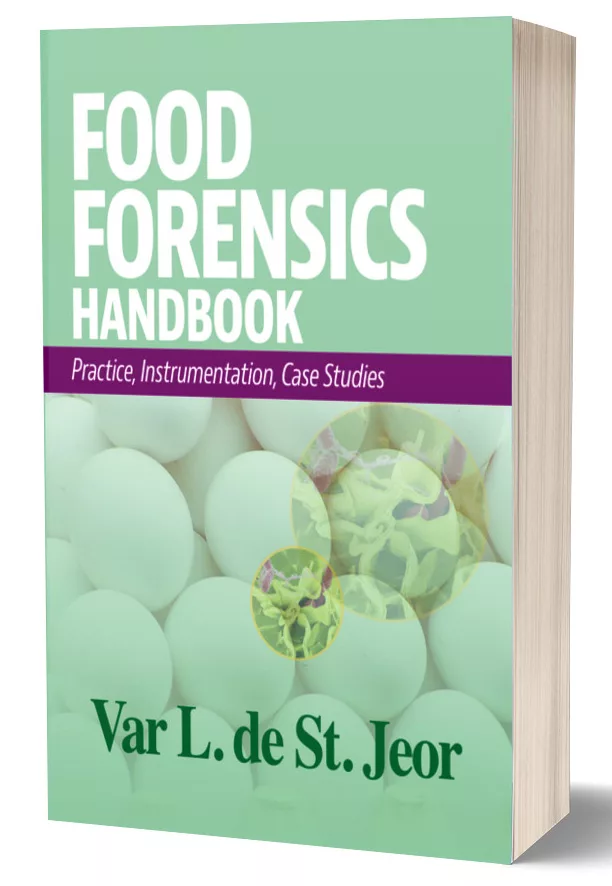Lab Outsourcing: What You Need to Know
Currently estimated in the neighborhood of $3.5 billion, the global food testing market is projected to reach $4.63 billion in 2018—a 32 percent increase—according to IndustryArc, a market research group based in India. By 2018, IndustryArc predicts, the number of analytical tests conducted worldwide will grow to 2.62 billion from 1.78 billion in 2013.
These imposing figures reflect numerous factors, such as the ongoing maturation of the food industry in China and other developing countries, marked growth in industry segments, heightened concerns over chemical contaminants and universal calls for a safer global supply chain.
Front and Center
Twenty years ago, China was largely a spectator on the global food stage with seats far from the 50-yard line. Today, as one of the world’s leading food suppliers, China is front and center at any serious discussion of the current state and future direction of the global food market. China has grappled with a series of high-profile food safety concerns, ranging from chemical contaminants in a variety of domestically produced products to product mislabeling in meat.
While the country is committed to making improvements, food safety experts, particularly in the United States and European Union (EU), note that the challenges facing China’s food safety system are transparent and extensive. Going forward, progressive reforms, including the implementation of food traceability and authentication systems, will have a major impact on industry stakeholders and consumers around the world.
Record Pace
Global food and beverage sales are estimated at $7 billion and increasing. Despite stagnant periods, a number of industry segments have enjoyed consistent growth, reaping higher revenues and more intense competition in domestic and foreign markets. Functional foods and organic products have been particularly cited for their popularity among consumers.
Driven to improve their health and prevent disease, consumers are turning to functional and organic foods in droves, and manufacturers are introducing more innovative and marketing-friendly products at a record pace. Current U.S. sales of functional food and beverages are estimated at around $40 billion annually. In 2013, the Organic Trade Association reported that U.S. retail sales of organic products grew by 11.5 percent to $35.1 billion and predicted additional growth this year.
Chemical Overload
For many consumers, chemical contamination is today’s most important food safety issue. In a 2010 survey conducted by the International Food Information Council (IFIC), chemicals in foods (39 percent) ranked second to bacteria (44 percent) among survey participants.
While chemical contaminants have long been a safety concern, primarily in the form of pesticides, the 2007 discovery of melamine—a toxic chemical typically used in plastics and fertilizers—in pet food spiked public awareness. Chemical contaminants are derived or produced through a variety of sources, including food processing (e.g., nitrosamines and acrylamide), environmental pollutants (e.g., pesticides, polychlorinated biphenyls, heavy metals and dioxins), veterinary residues (e.g., coccidiostats, antibiotics, beta-agonists and anabolic hormones), naturally occurring toxins (e.g., mycotoxins, plant toxins and marine biotoxins) and migrants from packaging materials (e.g., bisphenol A and 4-methylbenzophenone).
Chemicals are being introduced into the food chain at a disturbingly high rate. The U.S., EU, Canada and other countries are monitoring food and feedstuffs for the presence of contaminants that can have serious health consequences and enforcing established maximum tolerance levels.
At the same time, the food industry is adopting innovative strategies to reduce the presence of naturally occurring toxins in products. For instance, a special process using asparaginase, an enzyme used to mitigate acrylamide’s natural formation in dough-based foods, is now used globally. In addition, ongoing studies are investigating the mitigating effects of various antioxidants on acrylamide formation.
Shifting Focus
The U.S. Food and Drug Administration’s (FDA) Food Safety Modernization Act (FSMA) intends to ensure the safety of the nation’s food supply by shifting from a reactive mindset to one focused on prevention. Passed into law in 2011, FSMA has been characterized as the most sweeping food safety legislation in the U.S. since the passage of the Food, Drug and Cosmetic Act in 1938.
With the globalization of the food supply, FDA acknowledges in the historic act the importance of working with industry stakeholders—importers, exporters, regulators and testing laboratories—worldwide to combat food contaminants, whether they are microbiological, chemical or environmental.
FDA, under FSMA, must evaluate significant foodborne contaminants every 2 years and establish science-based performance standards, as appropriate, for specific food matrices or products. Furthermore, domestic and foreign laboratories accredited for the appropriate sampling and/or analytical testing methodologies must conduct all regulatory food testing.
This Begs the Question
To outsource or not to outsource? Thousands of food companies contemplate this important question each year. A Food Manufacturing® survey revealed that 48 percent of respondents reported that they conduct internal testing and outsource to contract laboratories. A little over 30 percent of respondents reported they solely perform tests in-house with their own lab technicians, whereas nearly 18 percent stated they use outside labs exclusively for testing. Nearly 4 percent said they neither perform in-house tests nor send samples to an outside lab for testing, but this will likely change due to FSMA requirements.
The challenges facing the food industry are complex, requiring validated or verified testing methods, new technologies to monitor suppliers on a global scale and information systems that allow real-time access to data. Qualified contract laboratories can deliver these all-important service points, providing food companies with much to think about on the merits of outsourcing.
For Your Consideration
Outsourcing is not for everyone, and many companies operate highly efficient internal laboratories. As noted in the statistics above, it is also very common for companies with internal facilities to employ independent laboratories for a significant part of their testing needs. This outsourcing trend will continue to grow due to the increased scrutiny associated with running ISO-accredited laboratories, as well as the desire of food companies to ensure the quality and veracity of their testing results.
When reviewing their testing needs, companies perched atop the outsourcing fence should take the following questions into consideration:
• Do you have a high degree of variability in your sample flow (e.g., seasonality)?
• Do you have a wide variety of products, ingredients and tests to perform?
• Do you require occasional use of capital-intensive tests (e.g., high-pressure liquid chromatography)?
• Are you conveniently located for an outside lab?
• Do you need pathogen testing for your products, environment or ingredients?
• Do you have to manage multiple internal labs with a small central staff?
• Are you having trouble finding, motivating and keeping qualified lab personnel?
• Do you have customers who are not satisfied with the internal lab’s performance?
• Do you have major customers who require you to use an outside lab for certificates of analysis?
• Does your company have uncertain business plans (e.g., possible downsizing, plant consolidations, etc.)?
• Do you lack confidence in the quality of your internal lab’s test results?
• How would you keep your lab current on regulatory and accreditation requirements?
• What is the initial cost of accreditation and the ongoing cost?
• What is involved in keeping technologies, calibrations and training current?
If half of these questions resulted in an affirmative response or it was difficult to come up with definite answers, outsourcing your analytical testing program could be right for your company.
Fundamental Factors
In choosing a contract laboratory, you must consider a number of fundamental factors, including sample turnaround time, duration of tests, quality systems, operating costs, laboratory technician training, data or laboratory information management systems (LIMS), Good Laboratory Practices, laboratory accreditation, technologies and client communication.
Beyond ISO 17025
ISO 17025 guidelines outline general requirements for the competence of testing and calibration laboratories. ISO-accredited operations, however, have the latitude to go above and beyond the stated requirements in their pursuit of excellence. Some do, and others—for any number of reasons—do not, negating rampant industry perceptions that ISO facilities are basically peas in a pod.
Automobiles are required to meet government performance specifications. Does this mean a Lexus and a Hyundai are one and the same? A quick peek under the hoods of both vehicles will quickly dispel that notion. When investigating an accredited lab, it is imperative not to get mesmerized by the high-gloss paint job. This can be achieved by exploring critical variables, such as:
• Management oversight of operations
• Use of laboratory control samples
• Established proof of competency (for example, participation in recognized, independent proficiency trials, such as AOAC International)
• Traceability (e.g., ability to trace reagents and chemicals back to samples)
• Systems for preventive/corrective action
• Advanced client communications
Are all accredited labs created equal? The answer is a resounding no. ISO 17025 accreditation, however, is a key starting point in choosing an outside testing provider.
World-Class
The alarming abundance of chemical contaminants and intensified focus on emerging microbiological pathogens have taught us the importance of working with laboratories that can quickly develop, validate and implement new testing technologies.
Chemical contaminants, such as veterinary drug residues and melamine, are typically present in samples at low concentrations, making their detection difficult in many food matrices. New technological breakthroughs combined with advancements in existing methodologies, ranging from lateral flow to triple quadruple mass spectrometry, allow for higher sensitivities and the detection of a wide range of chemical contaminants at low ppb levels.
Likewise, microbiological test kit manufacturers are continuously developing new DNA, RNA and phage-based technologies in an effort to reduce turnaround time to result, while maintaining the sensitivity and specificity required for methods to pass independent and peer-reviewed validation protocols.
Under FSMA directives, chemical and microbiological testing will remain an important part of food safety management programs industrywide. Because we never know when or where the next major analytical crisis will occur, having access to contract laboratories with world-class capabilities is a sound and practical business decision for food companies.
Start with Communication
From reporting suspect results to interceding with regulatory bodies on behalf of customers, contract laboratories are communicators. It is critical for contract laboratories to establish relationships with clientele based on clearly set objectives, ranging from sample volumes to certificate of analysis formats. Through LIMS, dedicated client service departments and technically trained sales teams, contract labs should have the means to provide customers with around-the-clock access to testing results and respond proactively to crisis situations.
In today’s heightened food safety environment, contract laboratories should offer far more than analytical results. For instance, highly knowledgeable contract laboratories can help plants identify and correct costly contamination issues by examining environmental data trends. Ideally, contract laboratories should serve as a reliable and full-service resource by providing auditing, consulting, training and other food safety management components.
Productive partnerships are built on trust and mutual respect. Highly competent and responsive contract laboratories will dedicate themselves to enhancing the customer experience by understanding the business objectives of their clients and building comprehensive programs to ensure they are realized.
Peace of Mind
Earlier in this article, it was noted that laboratory outsourcing may not be right for all food companies, but the outsourcing trend is growing. The quality assurance and “peace of mind” benefits offered by contract laboratories are plentiful and difficult to ignore, especially in today’s global marketplace. If your company is weighing the prospect of outsourcing, begin by seeking out the counsel of respected colleagues who have undergone this arduous but important process.

Looking for quick answers on food safety topics?
Try Ask FSM, our new smart AI search tool.
Ask FSM →








